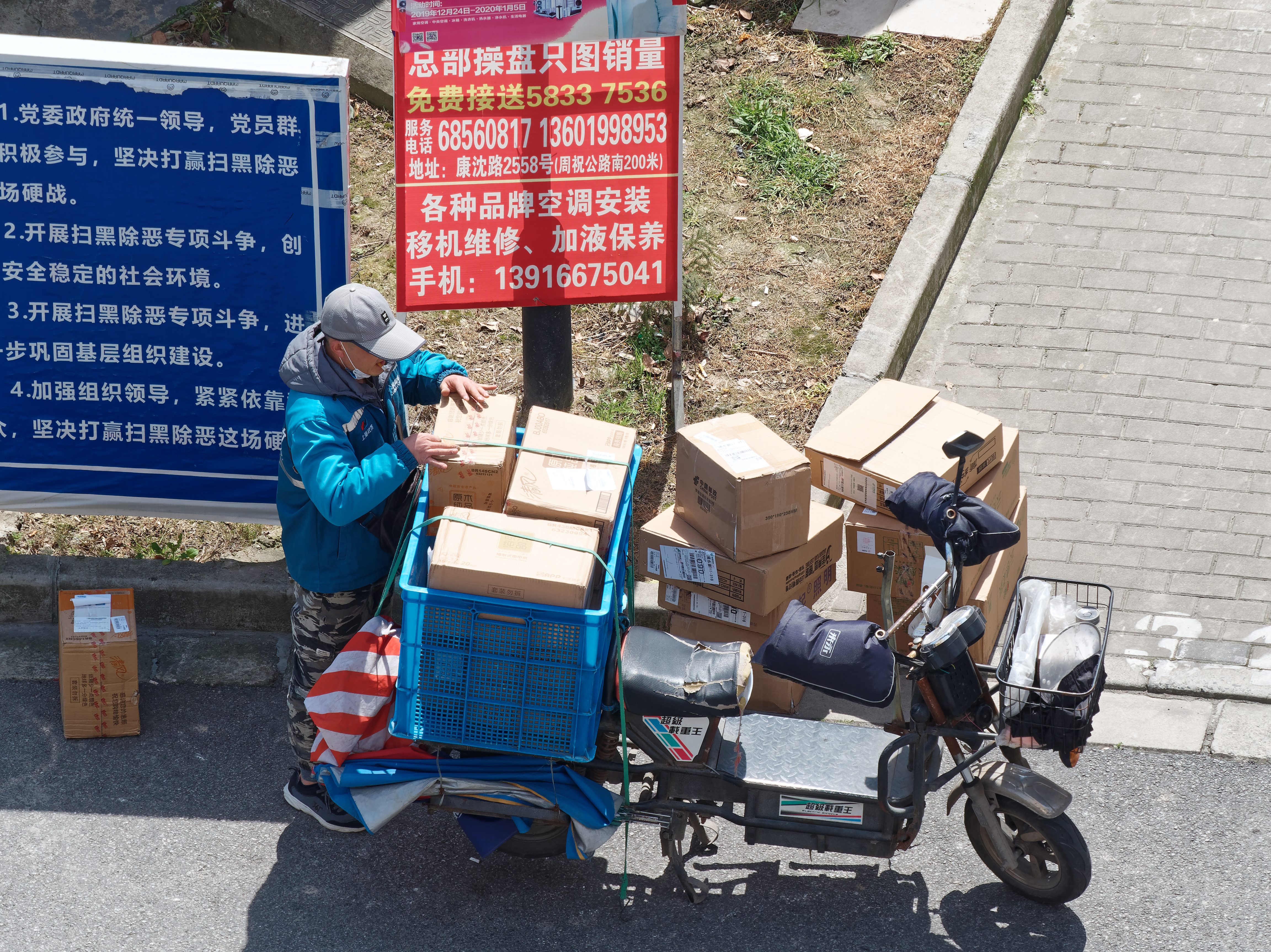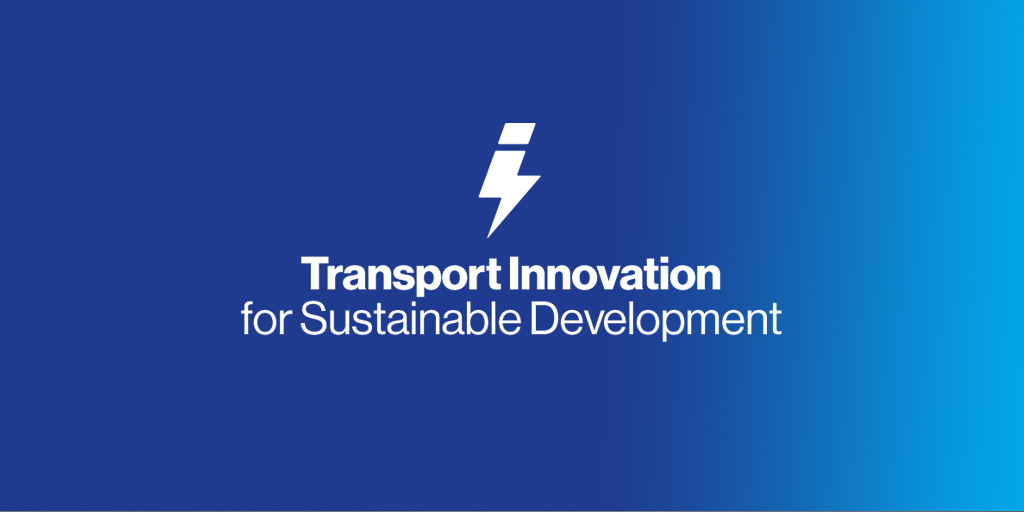With the stakes higher than ever in the run-up to the crucial UN climate talks in Scotland this November, Sophie Punte and Alan McKinnon share their vision of how logistics systems can and are providing a sustainable backbone for the planet’s ever-increasing movement of goods.

When logistics systems work, as they normally do, they are taken for granted and attract little media attention, despite handling USD 19 trillion of merchandise trade annually. The Covid crisis, however, has exposed both the importance and vulnerability of our just-in-time supply chains. These chains have played a critical role in the switch from conventional to online retailing during periods of lockdown and in the supply of personal protective equipment and now vaccines. On the other hand, cancelled ship sailings, trucks caught in 40 km tailbacks at borders, disrupted production lines and empty shelves in our shops have shown how susceptible logistics is to major disasters.
The pandemic has given us a glimpse of the kind of disruptions we can expect from climate change. Already, supply chains are being stressed by climate-induced events, such as the Australian and Californian forest fires and Africa’s floods and droughts. Meanwhile, adaptation of our built environment to ever-more-frequent and extreme weather events will generate much additional freight demand as we try to minimise the consequences of climate change.
Efforts to contain coronavirus have also given us a sense of the magnitude of the changes required to mitigate carbon emissions from freight transport. In May 2020, the International Transport Forum projected a 28% drop in freight-related emissions (PDF link) worldwide as a result of the Covid-19 lockdowns. Although emission levels have since rebounded, this level of decarbonisation will be required by 2030 to get freight transport onto a net-zero trajectory by 2050, though without having to resort to industrial and societal shutdowns.
With logistics’ share of global CO2 emissions at 10-11% and rising, efforts to decarbonise it must intensify. We believe that recovery from the pandemic presents an opportunity to build global supply chains that are both more environmentally sustainable and more resilient. Fortunately, these goals of sustainability and resilience are well aligned, and there are many ways in which they can be jointly achieved.
The logistics decarbonisation process is underway, though its pace and scale must increase to reach the Paris climate goals. In a recent European survey of 90 businesses, 30% had a target to cut total logistics emissions and a sustainability strategy in place or being implemented to deliver it.
New technology and a switch to low carbon energy will dramatically reduce freight emissions. Shenzhen, for example, has already deployed 70 000 “electric logistics vehicles” (ELVs). Small players like Workhorse are aspiring to become the Tesla of the electric delivery van market. However, we need faster action now and cannot wait until the world’s freight fleets migrate from fossil to zero-carbon energy. In the short to medium term, training in fuel-efficient driving, better use of freight carrying capacity, less packaging and shifting freight to cleaner, lower-carbon transport modes can all shrink the logistics carbon footprint.
In deploying these essentially managerial initiatives, we can ride the wave of digitalisation that is already transforming logistics. Digital freight platforms, like G7 in China, Sennder in Europe, India’s Freight Tiger and Flexport worldwide are taking the online matching of loads with available capacity to a new level. They are cutting the 20-30% of truck-kilometres typically run empty and raising fill rates in sea containers, planes and rail wagons. They are also helping entire supply chains to become more visible both operationally and in terms of their carbon emissions. This makes it easier for companies to report emissions to customers and identify ‘hot spots’ in need of efficiency improvement.
An increasingly carbon-intensive hot spot in many companies’ supply chains is the ‘so-called’ last-mile delivery to online consumers. By 2023, online shopping was expected to reach 22% of all retail sales worldwide before taking the impact of the coronavirus into account. A World Economic Forum / McKinsey study (PDF link) has predicted a 30% growth in CO2 emissions from last-mile delivery in the world’s 100 largest cities by 2030.
Where an online delivery replaces a car shopping trip, a significant net reduction in emissions can be achieved. Still, much more can be done to improve the energy and carbon efficiency of last-mile logistics by, for example, consolidating orders, using locker-banks and minimising returns.
The good news is that environmental action in the logistics sector is growing. In support of the EU Green Deal, a Sustainable and Smart Mobility Strategy was published in December outlining how the freight transport sector’s green and digital transformation should proceed. California has mandated that by 2035 only zero-emission vehicles are sold and is requiring truck manufacturers to transition to electric zero-emission trucks beginning in 2024. As part of its commitment to be carbon neutral by 2060, China is prioritising goods movement by rail and the use of electric delivery vehicles to curb freight emissions. About forty cities in The Netherlands are introducing zero-emission freight zones, as are cities in the UK, China and elsewhere.
Over 100 multinationals, including Unilever, HP Inc and Maersk, calculate and report logistics emissions using a standard developed by the Global Logistics Emissions Council or GLEC, thereby increasing consistency and transparency. DP-DHL was the first logistics company to commit to zero-emission freight by 2050, while IKEA will be making only zero-emission home deliveries by 2025. In the European study mentioned earlier, a majority of the 90 businesses surveyed reckoned that at least half of CO2-reducing measures in logistics also cut costs, giving them a strong commercial as well as environmental motive to decarbonise. Of these companies, 70% also reported that the pandemic would have either no impact or a positive effect on their logistics decarbonisation efforts.
Calls for a green recovery to the Covid-19 crisis are growing, supported by clear policy recommendations from the We Mean Business coalition. This needs to go hand-in-hand with making infrastructure climate-ready, at a cost of around USD 1.8 trillion by 2030 according to the UN-led Global Commission on Adaptation. Despite this huge spend, much of which will go on logistical operations, it should save around USD 4 for every USD 1 spent.
This year’s UN Climate Change conference (or COP26) in Glasgow presents an excellent opportunity to scale- up our collective efforts to achieve resilient, zero-emission freight and logistics by 2050.
Sophie Punte is the founder and board advisor of Smart Freight Centre, a global non-profit organisation dedicated to zero-emission freight, and Managing Director of Policy at the We Mean Business coalition.
Alan McKinnon is Professor of Logistics at Kuehne Logistics University in Hamburg, a lead author of the transport chapter of the IPCC’s Fifth Assessment Report and author of “Decarbonizing Logistics“.
The International Transport Forum’s 2021 Virtual Summit on “Transport Innovation for Sustainable Development” will be held from 17 to 28 May online. This special virtual edition of the world’s premier transport policy event features sessions for a brigher transport future including on low-carbon vehicles, actions to decarbonise freight transport, and on achieving more resilient and innovative goods transport. See the Summit programme and register to join the debate!

